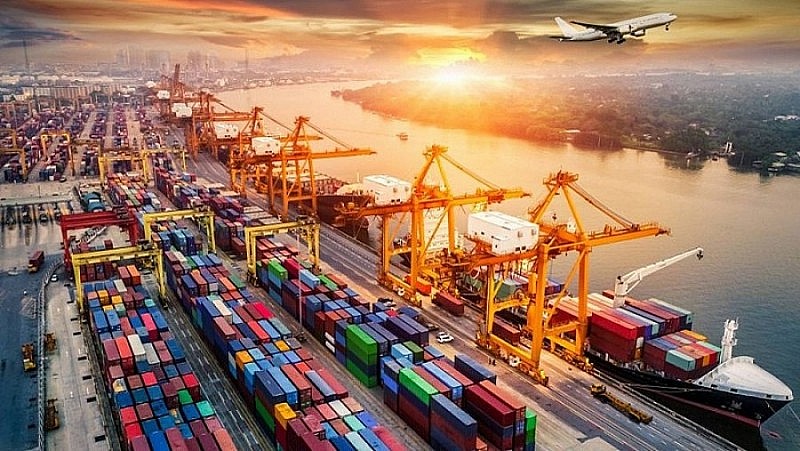In the ever-expanding world of global trade, understanding the export process is crucial for businesses looking to expand their markets and increase revenue. Exporting goods involves several steps, from initial planning to the final delivery of products. This article provides a detailed guide to the export process, helping businesses navigate the complexities and successfully reach international markets.
Market Research and Planning
Overview: The first step in the export process is thorough market research and planning. This involves identifying potential markets, understanding local demand, and analyzing competitors.
Steps:
Identify target markets by analyzing economic indicators, trade statistics, and consumer preferences.
Assess the competitive landscape to understand market entry barriers and opportunities.
Develop an export plan that outlines objectives, target markets, strategies, and resources required.
Example: A company planning to export organic coffee might start by researching markets with high demand for organic products, such as Europe or North America, and analyzing competitors already operating in those markets.
Product Adaptation and Compliance
Overview: Adapting products to meet the regulations and preferences of the target market is essential. Compliance with local standards ensures smooth customs clearance and market acceptance.
Steps:
Modify product specifications, packaging, and labeling to comply with local regulations and cultural preferences.
Obtain necessary certifications and quality standards, such as ISO or organic certifications.
Ensure the product meets safety, health, and environmental standards of the target market.
Example: A cosmetics company exporting to the European Union must ensure its products comply with the EU’s stringent regulations on ingredients and labeling.
Pricing and Payment Terms
Overview: Establishing competitive pricing and clear payment terms is critical to attract and retain international customers.
Steps:
Determine pricing strategy by considering production costs, shipping, tariffs, and market demand.
Decide on payment terms such as advance payment, letters of credit, or open account terms.
Set up currency exchange mechanisms to manage foreign exchange risks.
Example: An electronics exporter might offer competitive pricing by reducing production costs and negotiating favorable shipping rates, while also offering flexible payment terms to international buyers.
Documentation and Shipping
Overview: Proper documentation and efficient shipping are vital to ensure smooth export operations and timely delivery.
Steps:
Prepare necessary export documents, including commercial invoices, packing lists, certificates of origin, and export licenses.
Choose a reliable freight forwarder to handle logistics and shipping arrangements.
Ensure compliance with international shipping regulations and customs requirements.
Example: An apparel exporter needs to provide detailed documentation for each shipment, including accurate descriptions, quantities, and values, to facilitate customs clearance and avoid delays.
Customs Clearance and Delivery
Overview: Customs clearance is a critical step in the export process. Efficient handling of customs procedures ensures that goods reach their destination without unnecessary delays.
Steps:
Submit all required documentation to the customs authorities of the importing country.
Pay applicable duties, taxes, and fees as required by the importing country’s regulations.
Coordinate with the freight forwarder to ensure timely delivery to the buyer.
Example: A machinery exporter must ensure that all technical specifications and safety standards are clearly documented to meet the importing country’s customs requirements and avoid shipment holds.
Post-Delivery Support
Overview: Providing post-delivery support and maintaining good customer relationships are essential for repeat business and long-term success.
Steps:
Offer installation, maintenance, and technical support services to international customers.
Collect feedback and address any issues or concerns promptly.
Maintain open communication channels to build trust and ensure customer satisfaction.
Example: A medical equipment exporter can offer remote installation support and regular maintenance check-ups to ensure the equipment functions optimally and meets the buyer’s expectations.
Understanding and following a detailed export process is crucial for businesses aiming to succeed in international markets. By conducting thorough market research, ensuring product compliance, setting competitive pricing, managing documentation and shipping efficiently, and providing excellent post-delivery support, businesses can navigate the complexities of exporting and achieve global success.
For companies looking to enhance their export operations, seeking assistance from export consultants and leveraging technology for better efficiency can make a significant difference. With the right approach and resources, businesses can unlock new growth opportunities and establish a strong presence in the global marketplace.
If you need further assistance or consultancy on the export process, please contact us. Our team of experts is dedicated to helping you navigate the complexities of international trade and achieve your business goals.

 English
English Tiếng Việt
Tiếng Việt العربية
العربية हिन्दी
हिन्दी Español
Español